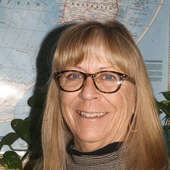- Research tips and McCook Brick Company- solid as a brick (12/16/24)
- Big Give appreciation and some railroad characters (11/15/24)
- George Randel becomes a landowner, gets married, and takes in a Buffalo Bill show (9/20/24)
- The memoirs of George F. Randel, early settler of Red Willow County (9/12/24)
- Vietnam War Memorial honors Nebraskans who served (6/13/24)
- McCook business promotions - just prior to 1893 stock market crash (5/30/24)
- Shall we dance? Meet you at the Gayway (12/8/23)
So youíve taken a DNA test....
Friday, October 6, 2017
Iíve taken a DNA test. Donít be impressed because I might as well not have taken it for what I understand about the results. Yes, Iíve got all these DNA matches through Ancestry and yes, one woman whom I was certain was a relative turned out to be so, but at this point it all just looks impressive on paper.
The problem is, I have my results, I have my matches, but I also have more questions now than I had before I started. It is frustrating and, believe me, when I tell you I wonít be trying to teach anyone how to navigate their DNA results! I know a couple of people who are up to the task though, and they are going to be presenting at our Expo on Oct. 14.
Here are some basics so you donít have the same deer in the headlights look that I had when I first started being interested in DNA: Iím going to explain the difference between Autosomal DNA and Y DNA.
Letís start with the easy one: YDNA. Going back to sophomore biology, we learned that mom always passes an X on to her childís 23rd Chromosome. Itís dad that contributes either an X or a Y to that link resulting in either XX, which will mean a girl, or XY resulting in a boy. So that Y chromosome is always a male lineage. Mom canít give you a Y, so momís DNA doesnít follow that Y, but dadís does. Men can take an YDNA test and women must find a male relative to take the test if their big question is on their fatherís side. The best results would of course be a father or brother, but a male first cousin would work nearly as well. If the question is on the paternal side, it would have to be a first cousin that would be a son of your fatherís brother and on the reverse, if the question is on your maternal side, it would be a son of your motherís brother.
The second kind of DNA is Mitochondrial (mtDNA). We get all of that from our mother and both men and women are gifted that and both can take the mtDNA test. Mitochondrial DNA is very stable DNA meaning that the rate of mutation, which occurs in both types of DNA, is very slow compared to YDNA, and it can be rated to determine the world origin of a personís lineage.
Iíve said in previous columns that Autosomal DNA is a test of female lineage. Essentially it is a testing of the 22 pairs of chromosomes which are equally contributed to a child from their father and their mother. If you wanted female only, you would have to take the mitochondrial test, but most choose to take, for genealogy matching purposes, the autosomal DNA test which will allow you to match up to both maternal and paternal relatives. Unless you are an identical twin, you and your siblings will not have exactly the same mixture of chromosomes. Sounds crazy because you have the same parents, but itís true. The term used to explain this is: recombination. However, even with this recombination, the matches can be pretty accurate back to third cousins. When you get to fourth cousins, your chances are cut in half. A fourth cousin is someone who shares a great- great- great- grandparent with you, so itís still a pretty fair chance considering that you have 32 of those grandparents to choose from.
On Oct. 14, Southwest Nebraska Genealogy Society is presenting a three part Exposition: Adoption, Charting Y DNA, and Charting Autosomal DNA. You will be given an example of each type of chart. Many of the calls I have received are concerning tracing biological relatives for an adopted person. Charting is one of the things that will help you weed out who is an important match to your DNA and who is not. Although we wonít be able to do individual charting that day, those who attend are encouraged to make an appointment during our open library days for that help.

